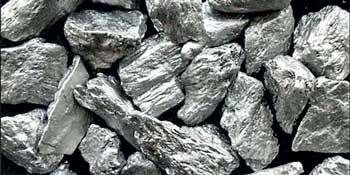28 Mar 2024 - {{hitsCtrl.values.hits}}
 The current prices of Sri Lankan graphite are significantly high; key avenues can be explored to bring them down and one such is by reducing the depth of operation.
The current prices of Sri Lankan graphite are significantly high; key avenues can be explored to bring them down and one such is by reducing the depth of operation.
The industry representatives stress that the high prices of local graphite are due to the depth of the deposits in the few operational mines within
the country.
“Reducing the depth of operation to 10-20m from the surface could considerably lower the cost of mining, which can be done by expanding mining operations to new mines, provided adequate regulations are in place,” said Bogala Graphite PLC CEO Amila Jayasinghe.
He shared his views during a discussion facilitated by the Institute of Policy Studies (IPS) that highlighted the challenges and opportunities in Sri Lanka’s graphite industry.
He noted that the challenges such as the transparency of the process to obtain mining permissions from the relevant authorities deter the potential foreign investment.
“The royalty fee for value-added graphite in Sri Lanka encourages the export of raw graphite to foreign anode producers, as it is cheaper, which is not beneficial to the local producer,” said Jayasinghe.
According to Prof. Anura Wijayapala from the University of Moratuwa, Sri Lanka’s strategic advantage lies in upstream value chain products within the electric vehicle market.
While the current graphite content of Sri Lanka is around 1.5 million tonnes, which is not adequate to meet the US demand, Sri Lanka could benefit from the high market prices for graphite by branding Sri Lankan graphite as better quality and produced through environmentally friendly and sustainable practices, he said.
Sri Lankan graphite production is comparatively a green process. Certain other manufacturing industries in Sri Lanka are already making use of the renewable energy usage to market their products to the environmentally conscious buyers.
About 50 percent of Sri Lanka’s electricity is renewable and the greenhouse gas emission in Sri Lanka is also comparatively low compared to many other countries, which may help label Sri Lanka’s graphite as “green graphite”.
The IPS in its study titled ‘Trade Wars in Electric Vehicle Supply Chains: A Win for Sri Lanka’s Graphite Industry?’ stated that success for the Sri Lankan graphite industry hinges on competitive positioning, strategic international partnerships and green manufacturing practices.
“As the electric vehicle market continues to expand, Sri Lanka’s graphite industry could indeed emerge as a key player in the global supply chain, provided it navigates the path with strategic foresight and innovation,” the IPS study revealed.
29 Nov 2024 35 minute ago
29 Nov 2024 2 hours ago
29 Nov 2024 3 hours ago
29 Nov 2024 3 hours ago
29 Nov 2024 4 hours ago